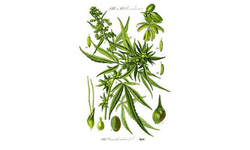In 2018, we wrote that cannabis is big business but obtaining trademarks for cannabis-related goods and services was not straightforward. Four years later, cannabis is still big business, if not even bigger, but the process of obtaining cannabis-related trademarks has changed very little. You may recall from our previous article that any business or person engaged in interstate commerce may apply for a trademark so long as use of the trademark is permissible under federal law, i.e., not illegal. As a result, cannabis and many cannabis-related products, not being lawful under the Controlled Substances Act (CSA), do not qualify for federally registered trademarks. The PTO generally does not inquire as to the legality of an applicant’s use of a trademark but it can and will do so if the record demonstrates or suggests a violation of law. So, mentioning the terms cannabis, marijuana, hemp, or cannabis extracts such as Cannabidiol (CBD) in a trademark application, will cause sirens to go off at the USPTO. No, they don’t call the FBI but they will make you attest to the legality or illegality of what you are doing.
Let’s take CBD, for example. Before 2018, the USPTO interpreted the CSA to apply to all cannabis extracts. Trademark applications identifying products containing CBD were routinely rejected. After the passage of the Farm Bill of 2018, things changed. The Farm Bill removed “hemp” products from the CSA’s definition of “marijuana” as well as specifying that marijuana derivatives of less than 0.3% THC (the active ingredient in cannabis) would no longer be classified as controlled substances. Now, if your trademark application contains CBD containing less than 0.3% THC you may qualify for a trademark. The catch is that you have to state that the product contains less than 0.3% THC in your description of goods and services.
But, even if you use the magic words, you may still not be out of the woods. In a very recent opinion of the Trademark Trial and Appeal Board (TTAB), the Board affirmed the refusal of an “intent to use” trademark application for PUREXXXCBD on grounds that the identified product was not legal. The applicant described the goods as
Plant extracts for pharmaceutical purposes; vitamins; dietary supplements; all of the foregoing containing CBD solely derived from hemp containing no more than .3% THC on a dry weight basis.
The applicant used the magic words so what’s the problem? The problem is that CBD may be legal for some purposes but it may not be legal to sell it for “pharmaceutical purposes.” This time, the Board looked not to the CSA but to the Federal Food, Drug and Cosmetic Act (“FDCA”), which, according to the Board,
prohibits the introduction or delivery for introduction into interstate commerce of a food to which has been added a drug approved under Section 355 of the Act ….An unapproved new drug cannot be distributed or sold in interstate commerce unless it is the subject of an FDA-approved new drug application (NDA) or abbreviated new drug application (ANDA). 21 U.S.C. §§ 331(d) and 355(a), (b) and (j).
The Applicants failed to provide evidence that its proposed CBD goods, which by its own words, were to be used for “pharmaceutical purposes” were subject to any kind of new drug application. The Board affirmed the Examining Attorney’s rejection of the application:
We find that the goods are per se unlawful under the FDCA, and therefore Applicant does not have a bona fide intent to use the mark in lawful commerce under Sections 1 and 45 of the Trademark Act.
It should be obvious that trademark applicants exercise care when drafting descriptions of goods and services, particularly when marketing highly regulated goods including products that may be subject to the CSA and the FDCA. Words matter and so does the intended use. Consulting an experienced trademark attorney is always a good bet.
— Adam G. Garson, Esq.


